
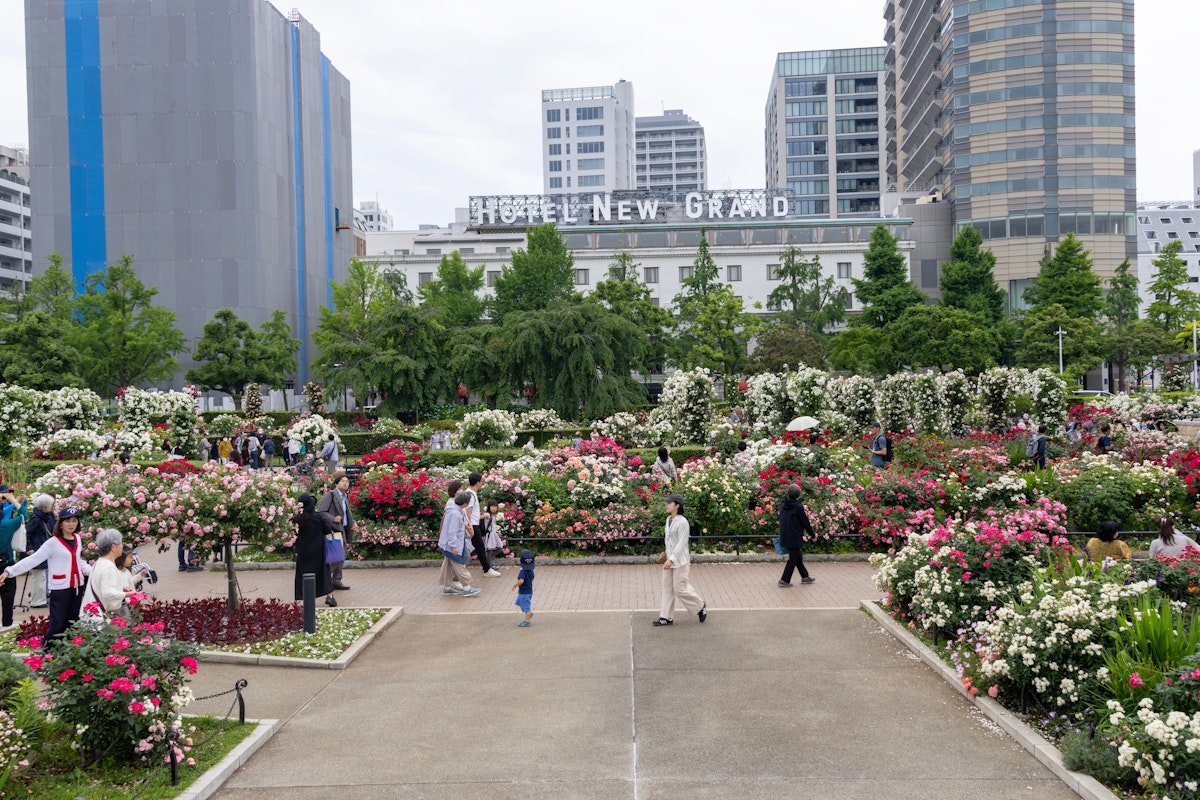
요코하마일본에서 두 번째로 큰 도시인 는 도시 생활과 자연의 아름다움이 활기차게 조화를 이루고 있습니다. 해안가를 따라 위치하고 있으며 자연 애호가를 위한 최고의 공원을 제공합니다.
상징적인 요코하마 공원에서 고요한 산케이엔 정원에 이르기까지 이 녹지 공간은 일상의 번잡함에서 벗어나는 데 꼭 필요한 탈출구를 제공합니다. 만을 따라 즐기는 평화로운 산책, 유적지, 피크닉에 완벽한 경치 좋은 장소 등 요코하마의 공원에는 모두를 위한 무언가가 있습니다.
이 번화한 도시를 방문할 때 꼭 활용해야 할 최고의 녹지로 뛰어들자.
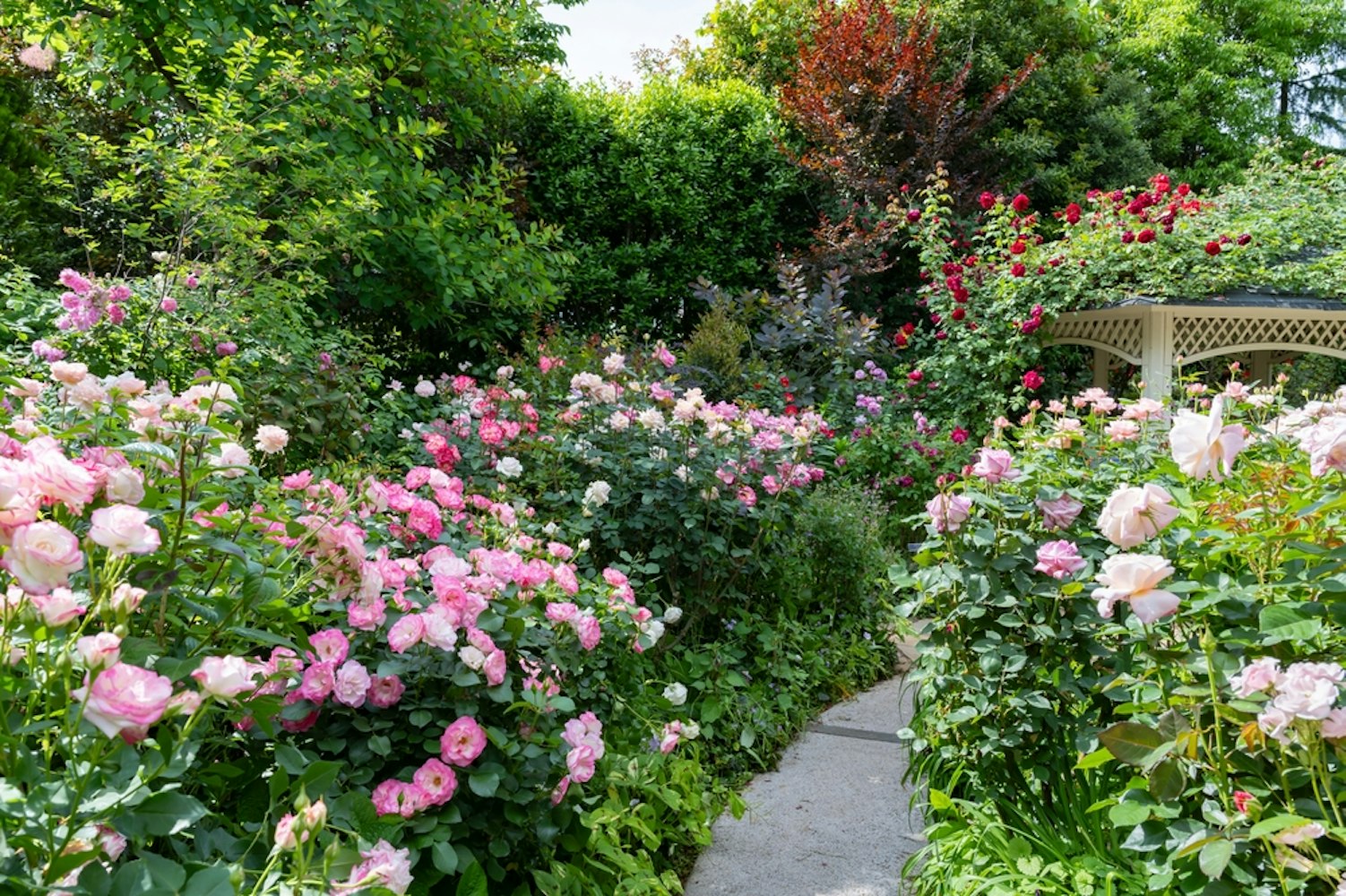
요코하마 공원은 요코하마에서 두 번째로 오래된 공원입니다. 1897 년에 문을 열었으며 근처에 있습니다 UjrL칸나이역(関兆台���.
넓은 일본식 정원, 연못, 요코하마 야구팀인 DeNA BayStars가 경기하는 요코하마 스타디움 등 다양한 볼거리가 있는 곳입니다. 이 공원은 매년 4월에 약 140,000개의 구근이 피는 계절별 튤립으로 특히 유명합니다.
방문객들은 잘 관리된 길을 따라 산책을 즐기면서 풍부한 역사와 고요한 분위기를 탐험할 수 있습니다.
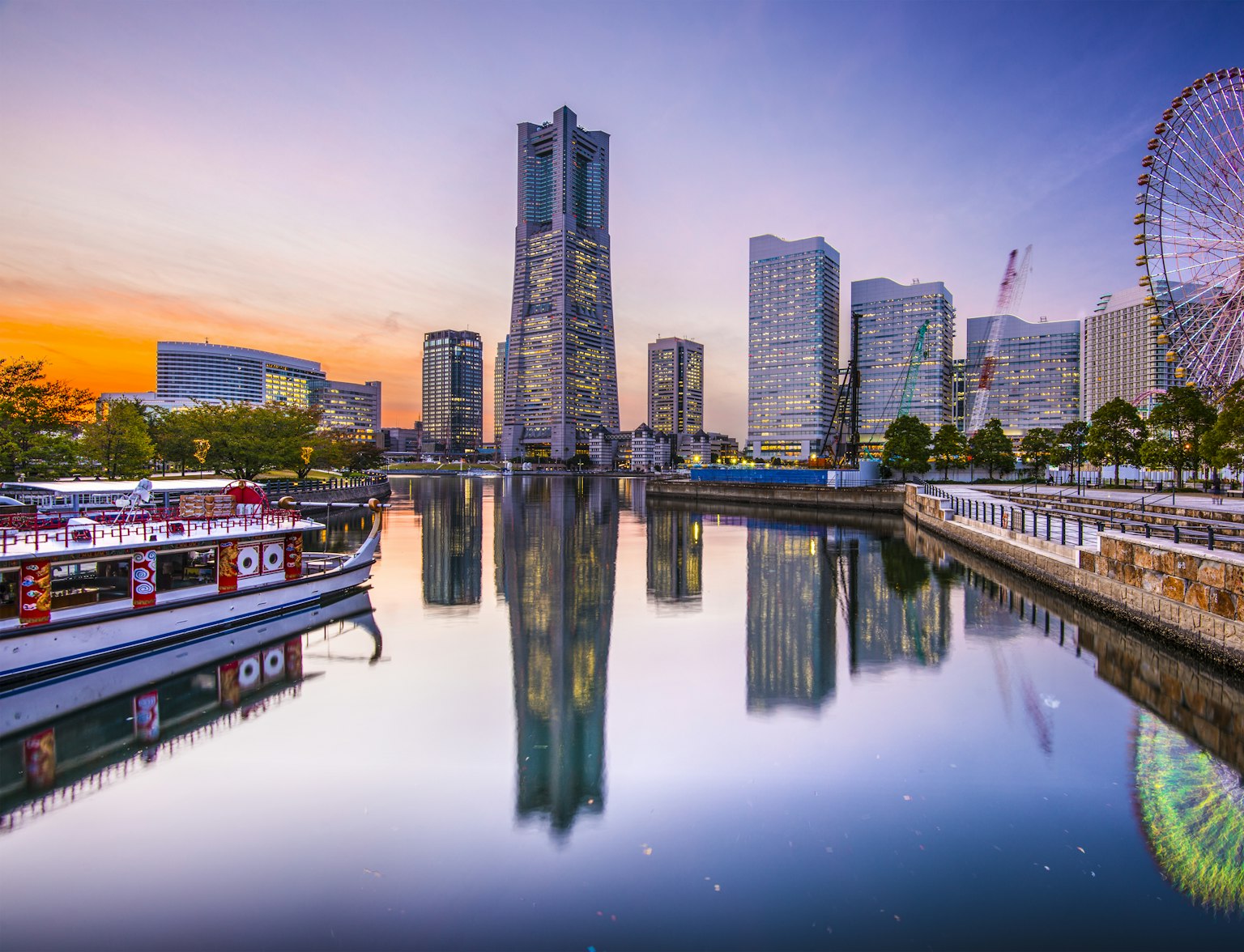
활기찬 요코하마 (Yokohama)의 활기찬 도시를 현지 가이드와 함께 8 시간 동안 개인 투어로 둘러보세요.
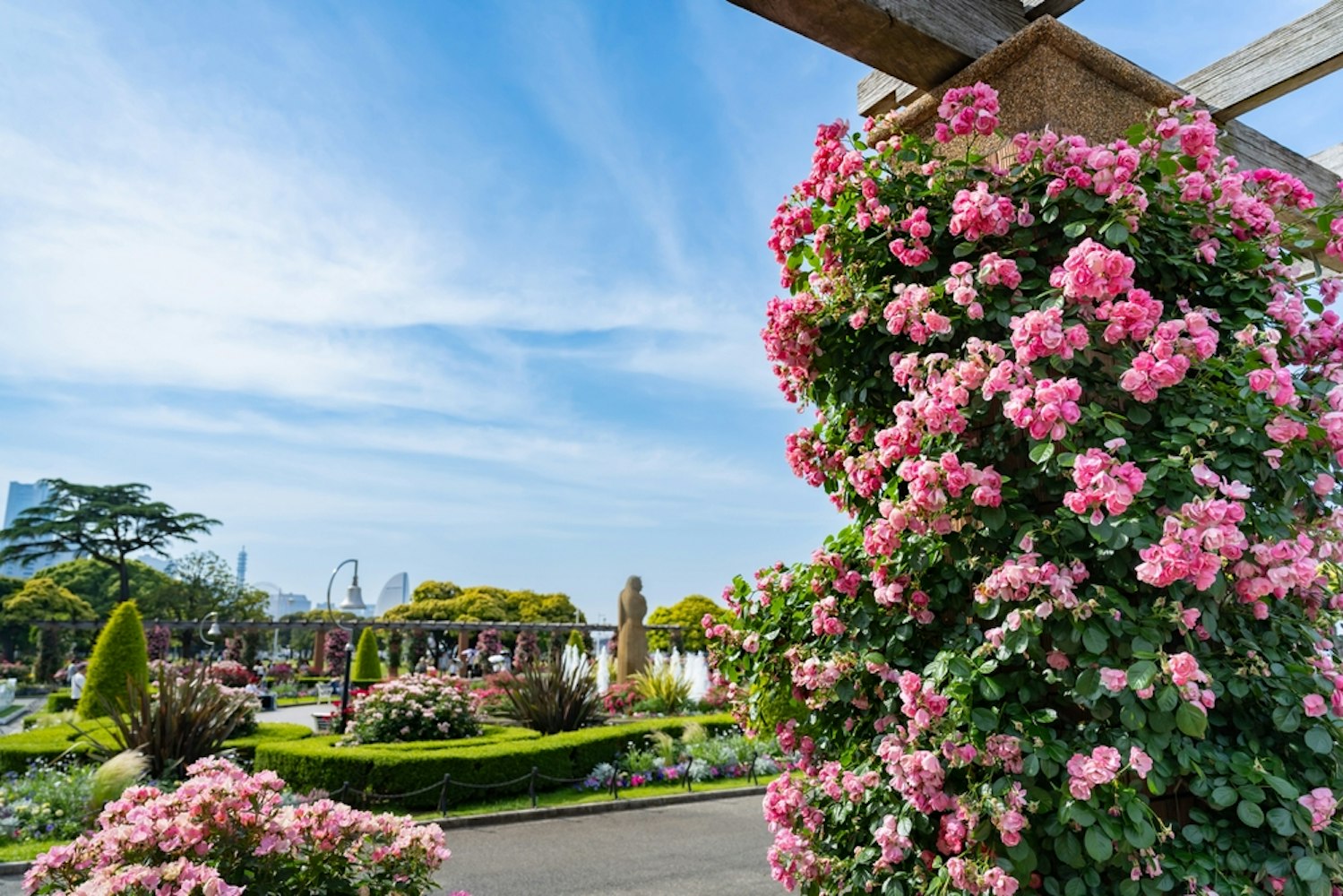
야마시타 공원(山下公園요코하마 나카구에 위치한 는 1930년 간토 대지진 이후에 조성된 유명한 수변 공원입니다. 요코하마 항구의 아름다운 전망을 감상할 수 있으며, 레드 슈즈 소녀 동상과 히카와 마루 선박 등의 관광 명소가 있습니다.
정원, 잔디밭, 기념물과 함께 역사와 레크리에이션이 조화를 이루는 공원은 현지인과 관광객 모두에게 인기가 있습니다. 미나토 미라이 선(Minato Mirai Line)의 모토마치 추카가이 역(Motomachi Chukagai Station)과 가까워 방문객들이 쉽게 접근할 수 있습니다.

독특한 녹지 공간, 요코하마 스트로베리 파크 색다른 자연 체험을 제공합니다. 이 정원에서는 일년 내내 신선한 딸기를 딸 수 있어 가족이나 단 것을 좋아하는 사람에게 완벽한 활동입니다.
네기시 역에서 가까운 거리에 있기 때문에 닛폰마루 기념 공원이나 야마시타 공원을 방문하면 하루 종일 둘러볼 수 있으며, 이 공원은 특히 주말에 인기 있는 장소이므로 미리 예약하면 됩니다.

좋아하는 역사 사이트, 닛폰마루 기념공원 는 전통적인 녹지 공간이 아니지만 야마시타 공원 옆의 멋진 해안가 경험을 제공합니다. 그 중심에는 닛폰마루(Nippon Maru)가 있는데, 지금은 박물관으로 사용되고 있는 옛 범선입니다.
공원은 사쿠라기초 역 근처의 미나토 미라이에 위치해 있어 버스 노선이나 JR 네기시선으로 쉽게 갈 수 있습니다. 공원의 그림 같은 주변 환경과 배의 전시물은 요코하마의 해양 과거를 엿볼 수 있게 해주어 역사 애호가들에게 훌륭한 장소입니다.
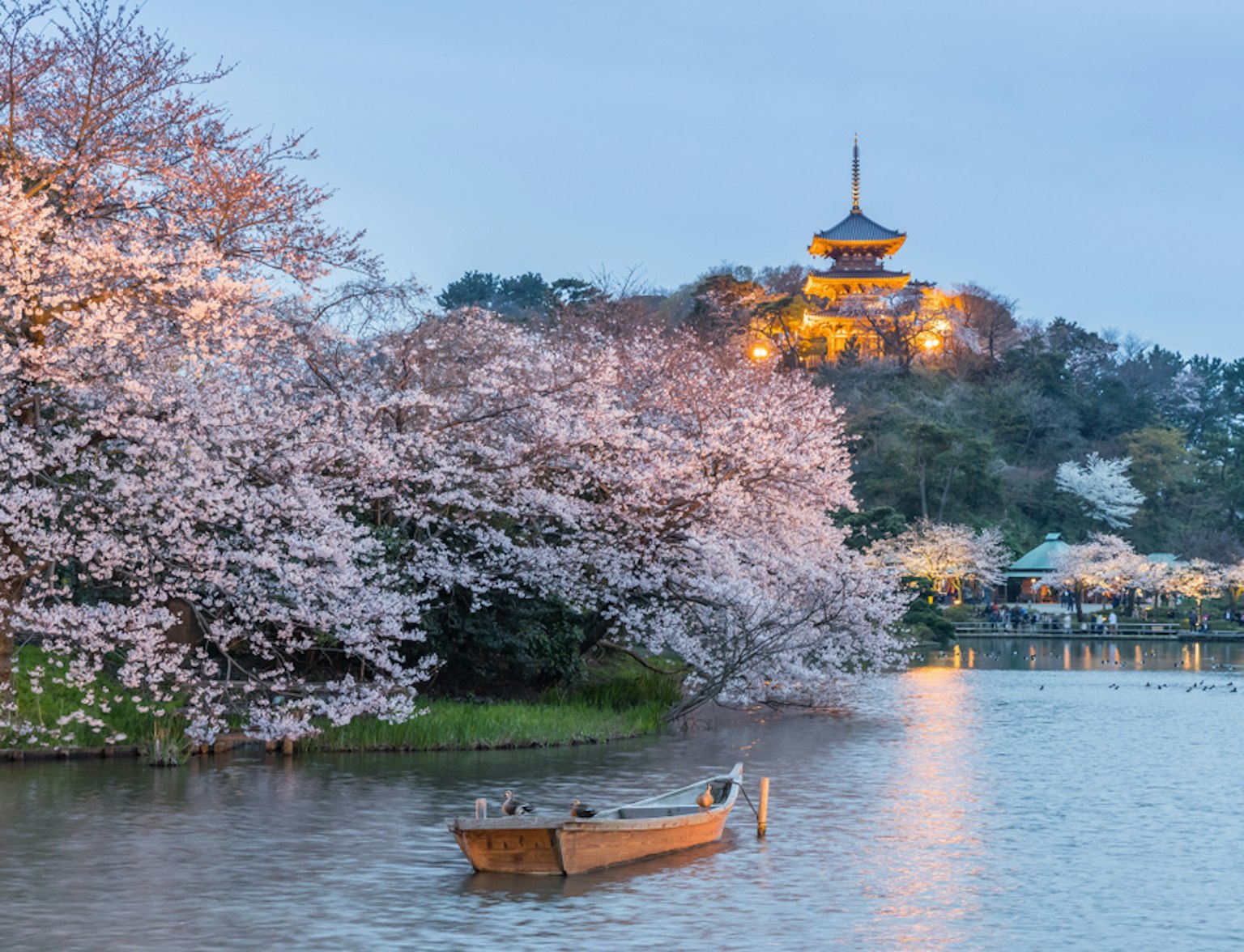
요코하마의 활기찬 문화를 개인화 된 반나절 도보 여행으로 경험하십시오.
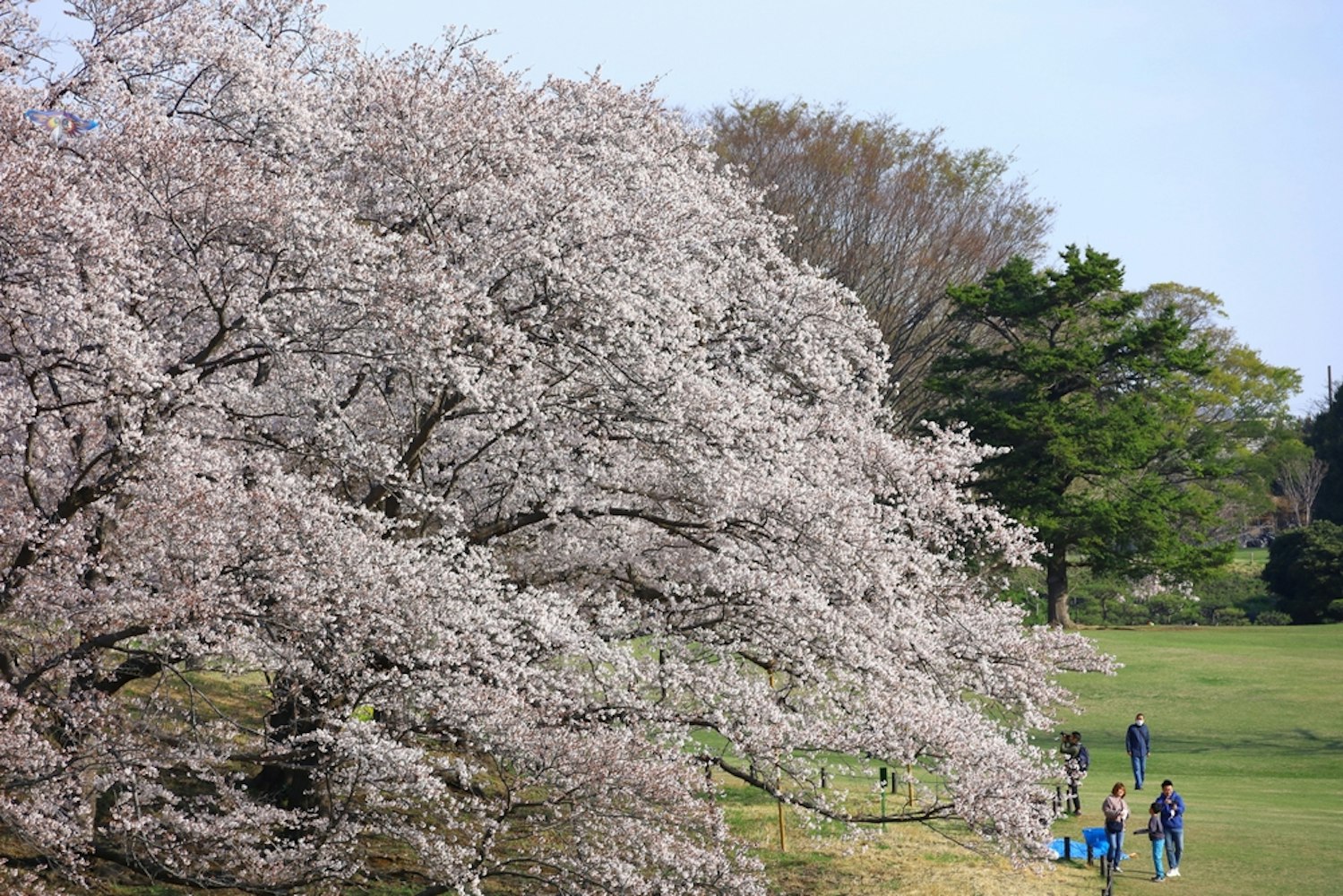
네기시 삼림공원은 요코하마에서 가장 큰 공원 중 하나입니다. 풍부한 역사와 아름다운 경치로 유명합니다.
1867년 일본 최초의 서양식 경마장으로 지어진 이 공원은 제2차 세계대전 이후 고요한 녹지로 탈바꿈했습니다. 오늘날에는 광활한 들판, 매화 숲, 휴식이나 조깅에 이상적인 산책로가 있습니다.
이 공원에는 방문객들이 이 지역과 경마의 역사적 관계를 탐구할 수 있는 말 박물관도 있습니다.
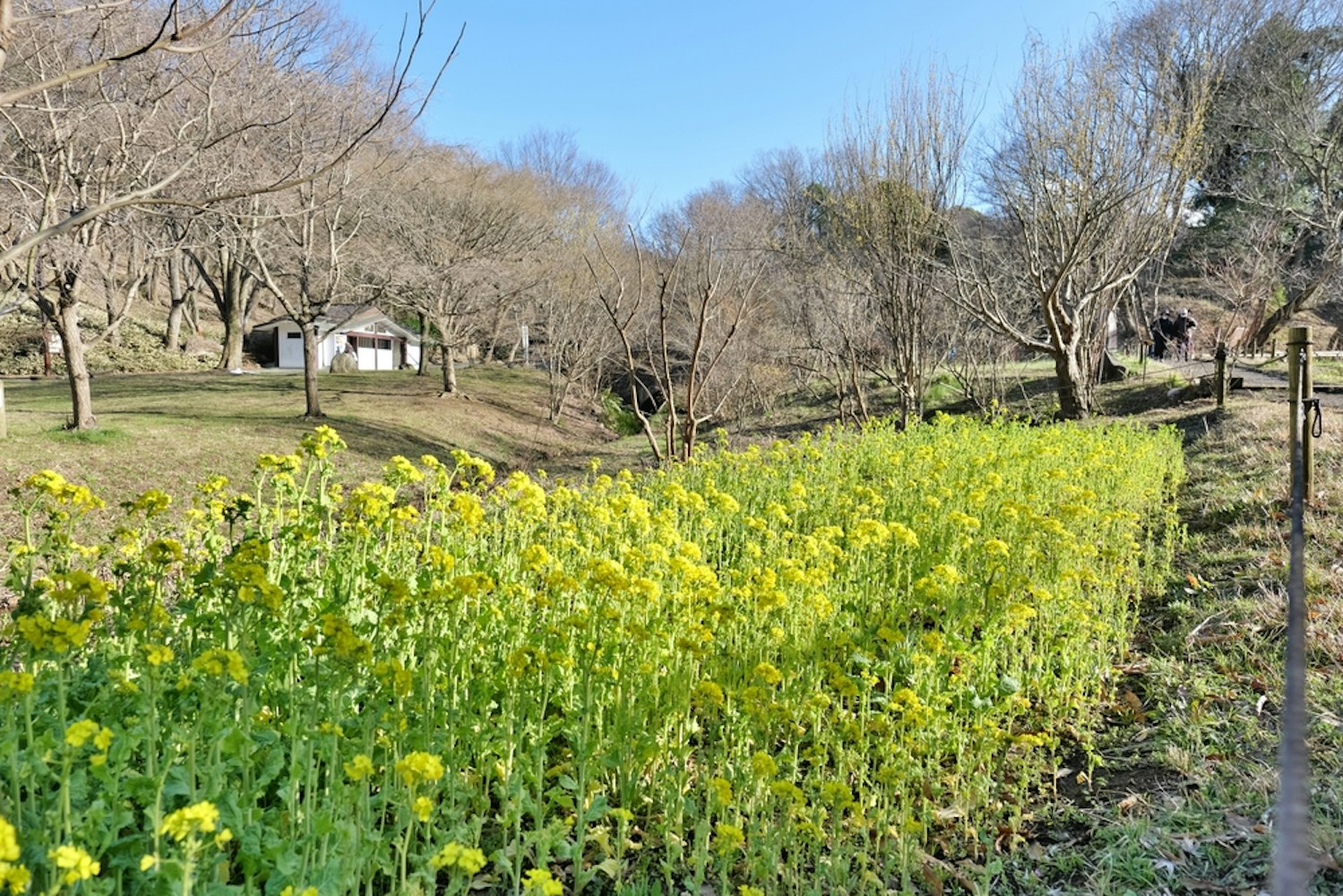
시키노모리 공원요코하마에 위치한 는 도시의 바쁜 분위기에서 벗어나 평화로운 휴식을 취할 수 있는 곳입니다. "포시즌스 포레스트 파크(Four Seasons Forest Park)"로 알려진 이곳은 사계절의 활기찬 풍경을 보여주며 일년 내내 명승지입니다.
이 공원은 넓은 피크닉 공간, 산책로, 어린이를 위한 거대한 미끄럼틀과 같은 명소가 있어 가족 나들이에 적합합니다. 자연 환경은 또한 아이들에게 교육 기회를 제공하여 자연과 교감할 수 있는 공간을 제공합니다.
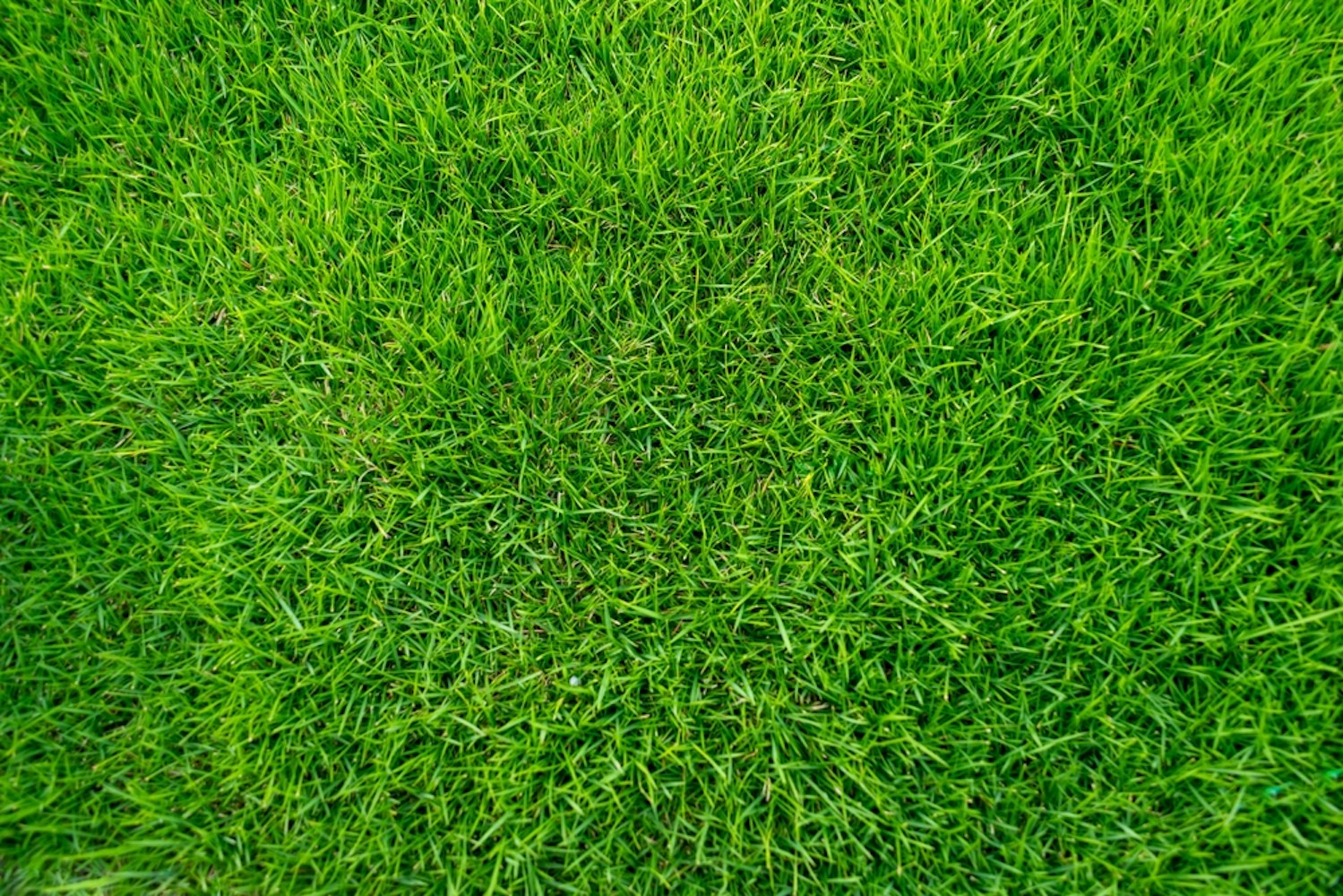
고도모노쿠니, 또는 "Children's Land"는 요코하마에 있는 광대한 자연 공원입니다. 아키히토 천황과 미치코 황후의 왕실 결혼을 기념하기 위해 1965년에 설립된 이 건물은 약 240에이커의 면적을 차지하며 다양한 가족 친화적인 활동을 제공합니다.
이 공원은 동물을 만져볼 수 있는 동물원과 조랑말 타기부터 자연 산책, 공예 구역, 벚꽃 구경 및 아이스 스케이팅과 같은 계절별 명소에 이르기까지 모든 것을 제공합니다. 도큐 고도모노쿠니 선(Tokyu Kodomonokuni Line)을 통해 쉽게 접근할 수 있어 일년 내내 현지인과 관광객에게 인기 있는 여행지입니다.
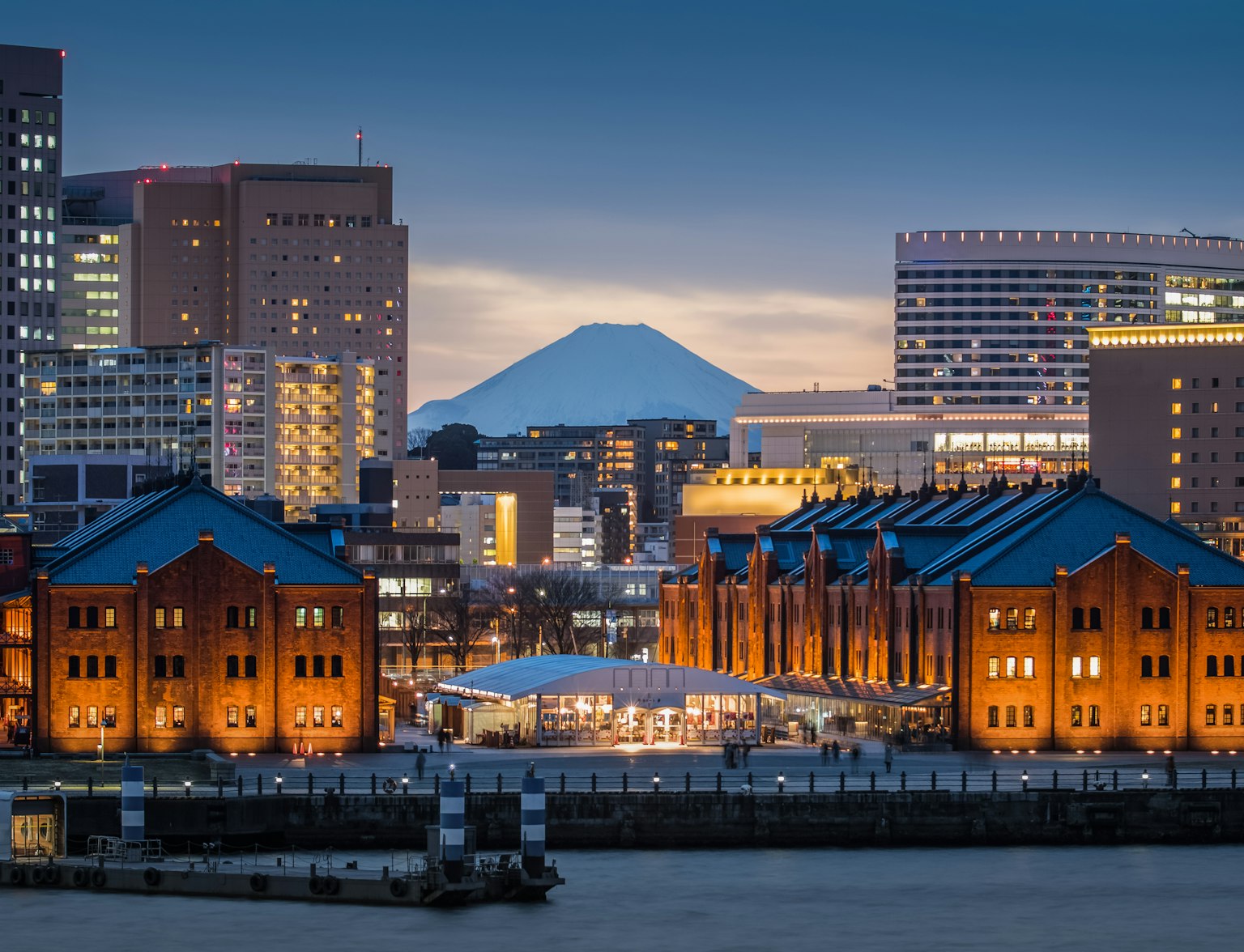
요코하마 항을 가까이서 바라보고 도시의 탁 트인 전망을 감상하십시오.
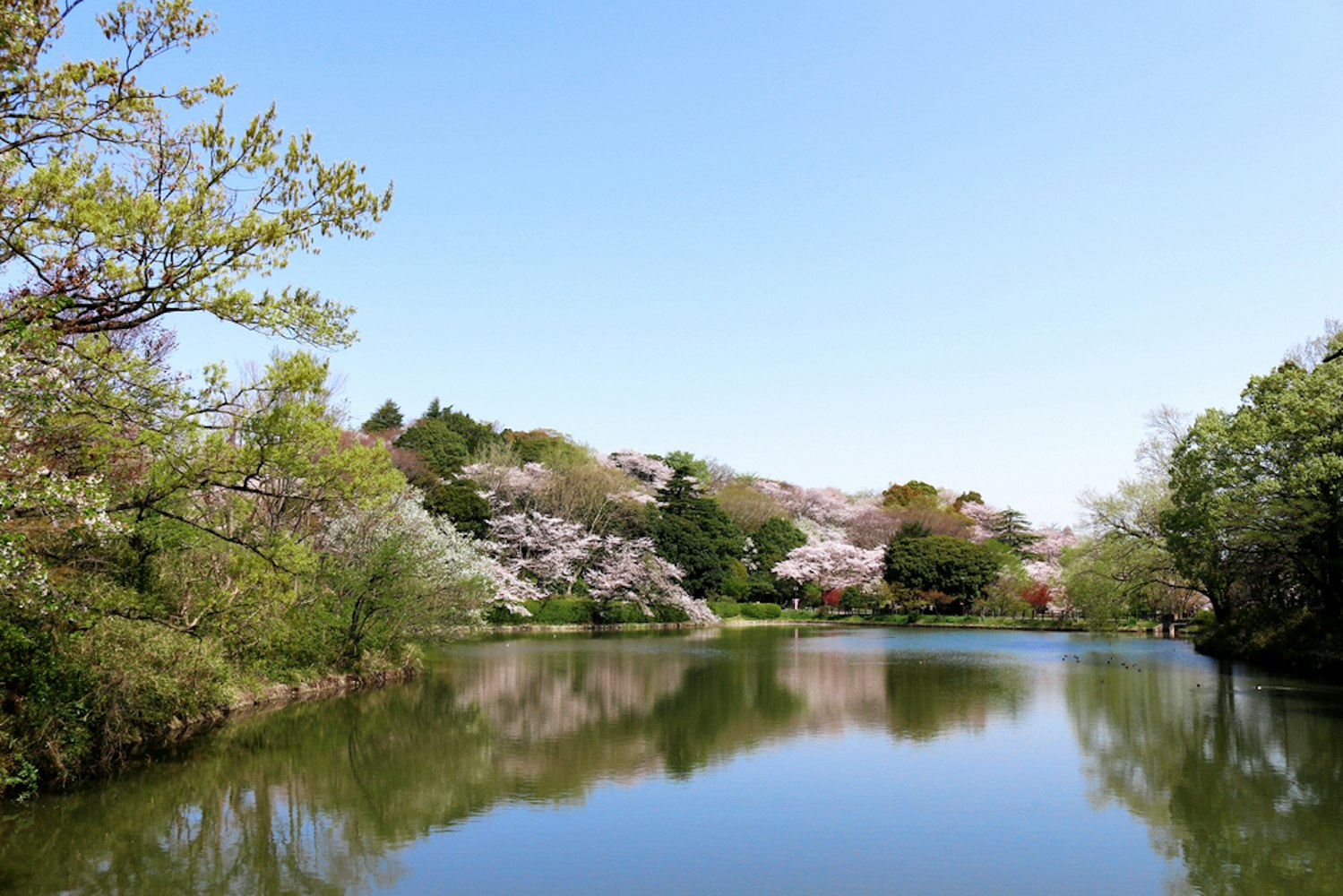
미쓰이케 공원요코하마 쓰루미구에 위치한 는 자연을 사랑하는 사람들에게 안성맞춤인 넓고 고요한 녹지 공간입니다. 300,000제곱미터가 넘는 면적에 3개의 연못이 있어 일본 100대 벚꽃 명소 중 하나입니다.
이 공원에는 1,600그루 이상의 벚나무가 심어져 있으며, 78종의 벚나무가 봄 내내 다양한 시기에 꽃을 피웁니다. 미쓰이케 공원은 또한 독특한 한국식 정원과 야구장, 테니스 코트, 산책로를 포함한 수많은 레크리에이션 시설을 제공하여 방문객들에게 번잡한 도시 생활에서 고요한 탈출구를 제공합니다.
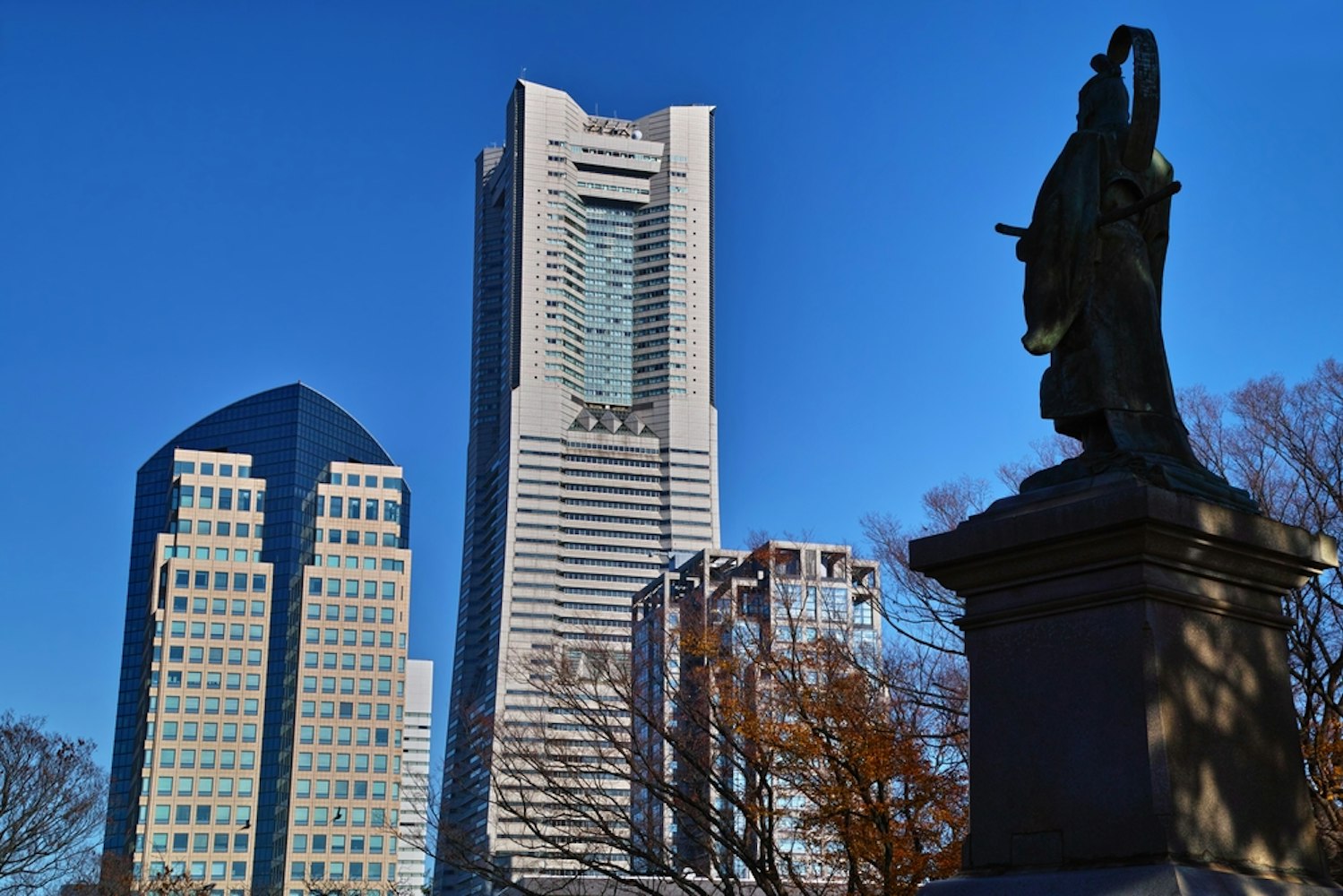
가몬야마 공원 요코하마에는 니시구에 위치한 경치 좋은 언덕 꼭대기 공원이 있습니다. 객실에서 미나토 미라이 21(Minato Mirai 21) 지구의 아름다운 탁 트인 전망을 감상하실 수 있습니다.
200그루의 벚나무로 유명한 이 공원은 봄에 벚꽃을 볼 수 있는 인기 있는 장소입니다. 또한 1859년 요코하마항을 세계에 개방한 핵심 인물인 이이 나오스케의 동상도 있습니다.
사쿠라기초역에서 쉽게 접근할 수 있는 이 평화로운 공원은 역사, 문화, 자연이 어우러져 자연 애호가에게 완벽한 여행지입니다.
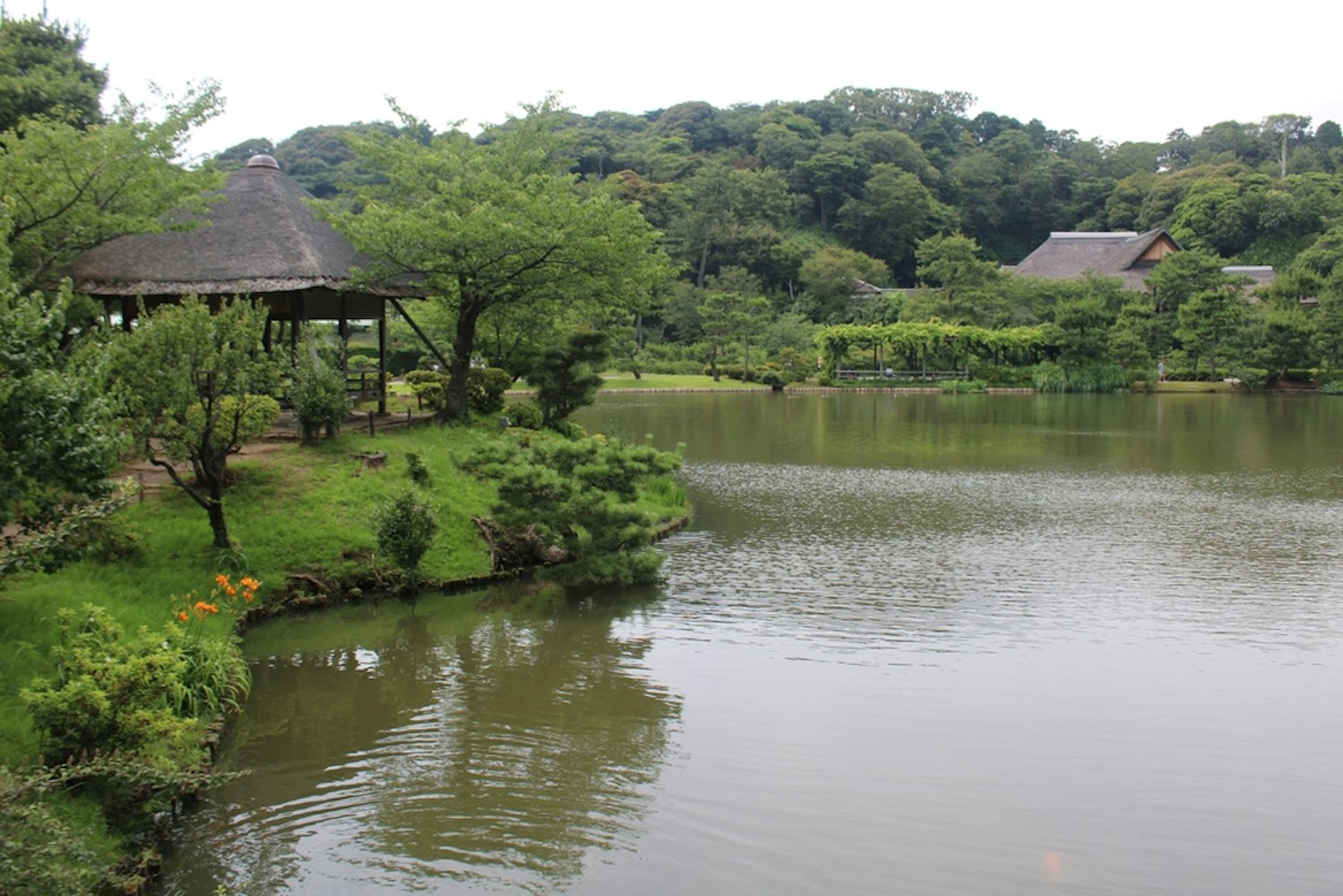
좀 더 고요한 경험을 원하시면 다음을 방문하십시오. 산케이엔 정원. 나카구에 위치한 이 전통적인 일본 정원은 상징적인 삼층탑과 산케이엔 본당과 같은 교토의 역사적인 건물이 특징인 조경의 걸작입니다.
저명한 실크 상인인 하라 산케이가 설계한 이 정원은 1906년 일반에 공개되기 전까지 그의 사유지였습니다. 방문객들은 연못 주변에서 경치 좋은 산책을 즐기거나, 계절별 꽃을 감상하거나, 공원 곳곳에 흩어져 있는 유서 깊은 건물을 둘러볼 수 있습니다.
자연을 사랑하는 사람이라면 꼭 방문해야 할 산케이엔(Sankeien)은 칸나이 역(Kannai Station)에서 차로 가까운 거리에 있는 고요한 탈출구를 제공합니다.
경로 계획하기: 많은 공원이 동일한 버스 노선을 통해 쉽게 접근할 수 있어 하루에 여러 명소를 편리하게 방문할 수 있습니다.
일일 패스 구매: 여러 공원을 둘러볼 계획이라면 JR 네기시선이나 버스 노선을 이용하는 일일 패스를 사용하면 시간과 비용을 절약할 수 있습니다.
영업시간 확인: 공원마다 운영시간이 다릅니다. 예를 들어, 산케이엔 정원은 오전 9시부터 오후 5시까지 문을 열고, 일부 지역은 월요일에 더 일찍 문을 닫습니다.
입장료: 야마시타 공원(山下公園)과 닛폰마루 기념공원(Nippon Maru Memorial Park)과 같은 공원은 무료이지만, 산케이엔 정원(Sankeien Gardens)과 같은 공원은 소정의 입장료를 내야 합니다.
접근성: 대부분의 공원은 요코하마 역, 모토마치 추카가이 역, 사쿠라기초 역과 같은 주요 기차역 근처에 있어 대중 교통을 이용하는 것이 좋습니다.
날씨: 온화한 날씨를 즐길 수 있는 4월이나 9월에 방문하는 것을 목표로 하지만, 계절마다 독특한 풍경을 즐길 수 있습니다.
이 요코하마시 는 현대적인 도시의 중심지이자 일본에서 가장 아름답고 다양한 공원이 있는 곳입니다. 야마시타 공원(Yamashita Park)의 해안가를 산책하는 것이든, 니폰마루 기념 공원(Nippon Maru Memorial Park)에서 해양 역사를 탐험하는 것이든, 산케이엔(Sankeien)에서 일본 전통 정원의 아름다움을 감상하는 데 관심이 있든, 모두를 위한 무언가가 있습니다.
도시의 풍부한 역사, 그림 같은 환경, 버스나 기차로 쉽게 접근할 수 있는 덕분에 자연을 사랑하는 사람들에게 이상적인 여행지입니다. 가방을 챙기고 편안한 신발을 신고 요코하마 최고의 녹지 공간을 발견하기 위해 여행하십시오.
요코하마의 해변 공원까지 대중 교통으로 이동하는 가장 좋은 방법은 무엇인가요?
시사이드 파크에 가려면 요코하마 역에서 버스를 타고 가장 가까운 버스 정류장에서 내리세요. 거기에서 아름다운 해안가 풍경을 즐기려면 조금만 걸어가면 됩니다.
요코하마는 일본의 도시입니까?
요코하마는 도쿄 외곽에 위치하고 있음에도 불구하고 별도의 도시로 인식되고 있습니다.
요코하마를 방문할 가치가 있습니까?
이 질문에 대한 시대를 초월한 대답은 부인할 수 없는 '예'입니다.
요코하마에서 후지산을 볼 수 있습니까?
후지산은 요코하마 스카이라인의 두드러진 특징으로, 미나토 미라이 21 지구의 수많은 고층 타워에서 볼 수 있습니다.
요코하마에서 가까운 공항은 어디인가요?
도쿄 하네다



